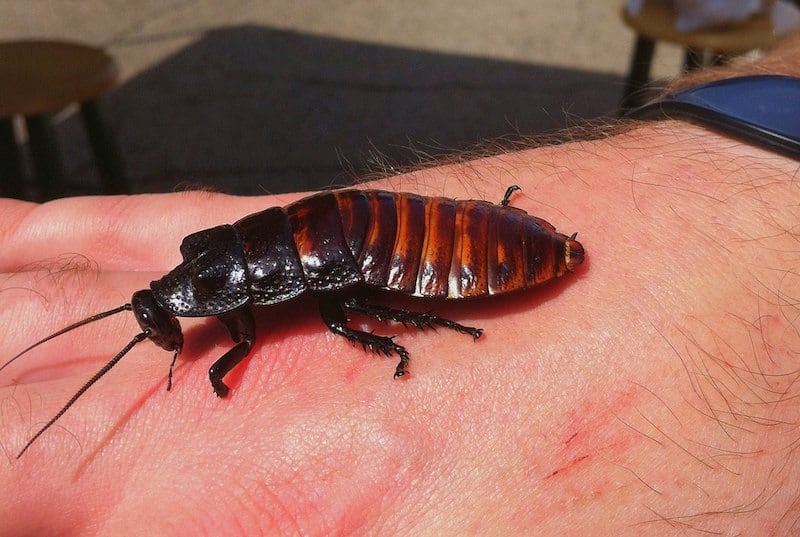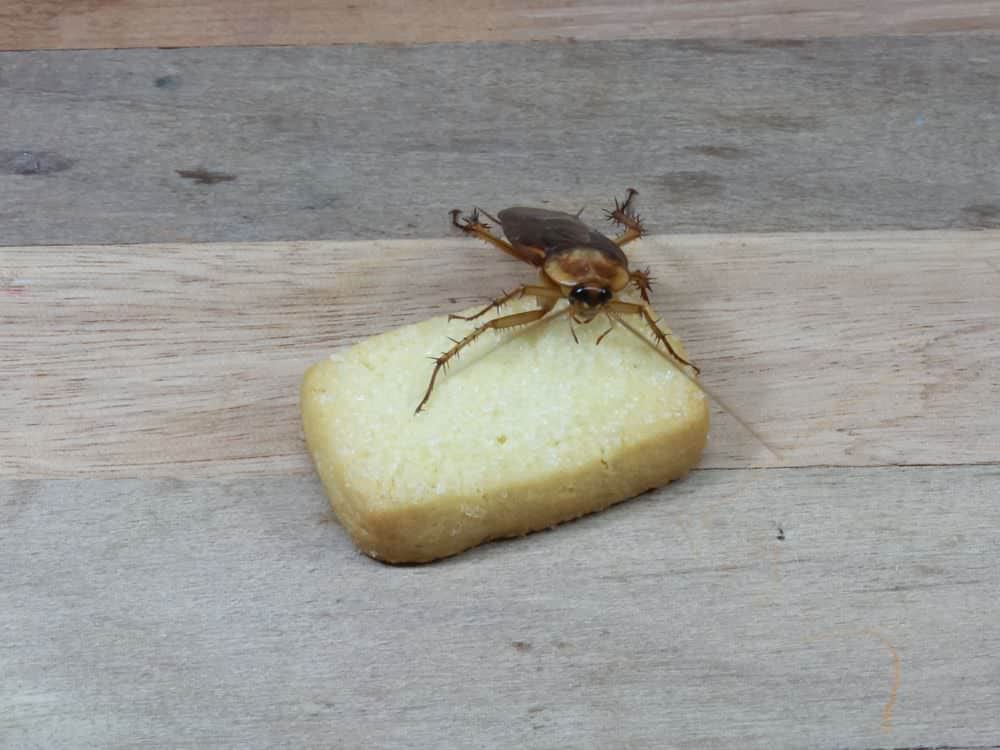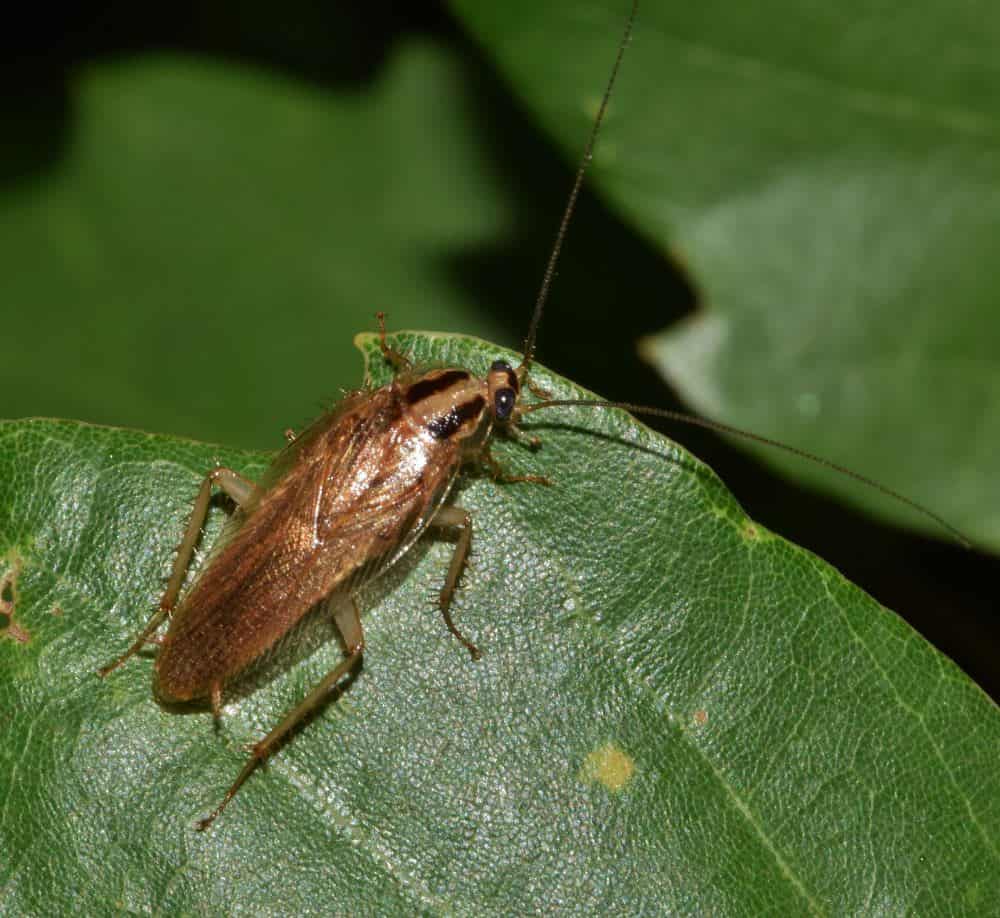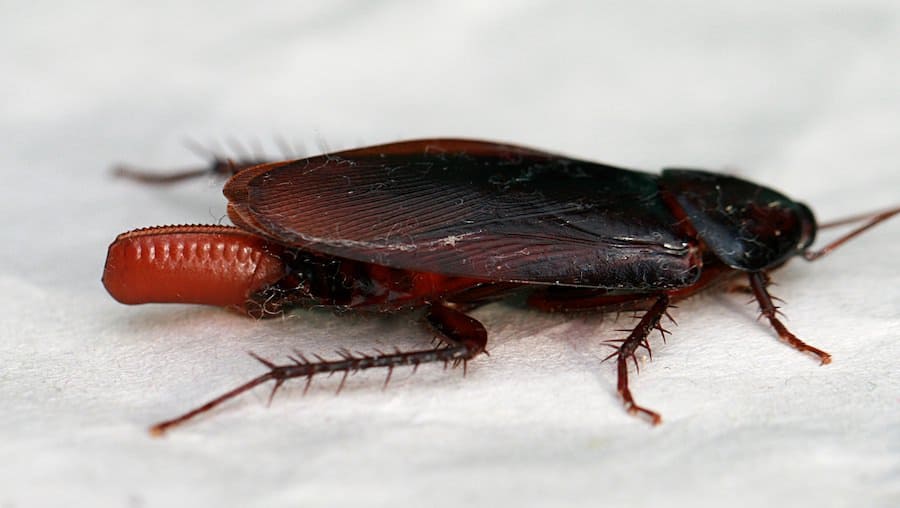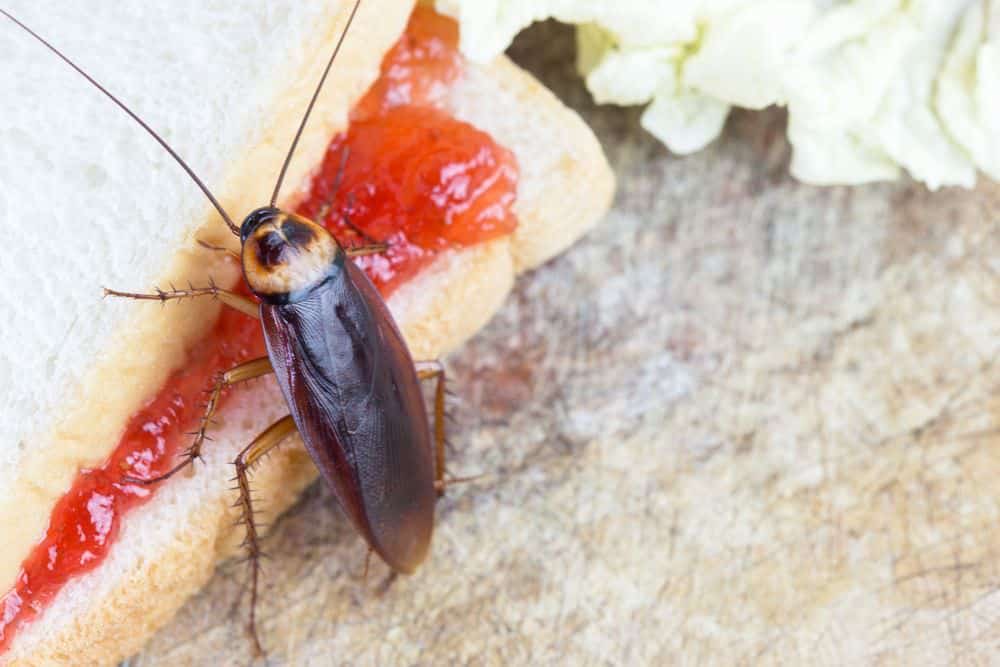Cockroach Infestations: Signs & Treatment
A cockroach infestation can be daunting to deal with. It is important to know the signs of an infestation, so that you can stop it in its tracks. In this article, you will learn how roaches can enter your home and how to find them.
I will explain how you can get your property free of cockroaches. Finally, I will cover how to prevent a repeat infestation.
How Do Roaches Get Into the Home?
There are many ways cockroaches can enter your home. They are enterprising insects, and certain types can even fly.
Roaches can squeeze themselves into the smallest of crevices. For example, an adult German cockroach can fit itself into a crack that’s just 0.06 of an inch wide.
If your home or apartment building has such openings, cockroaches can get in. Of course, these insects will also enter through open windows and doors.
Cockroaches can access structures through pipes, too. They can infiltrate a pipe outside and emerge from drains inside the home. If the walls are hollow in apartment buildings, roaches can move between apartments in this way.
One or more cockroaches can be unintentionally brought inside by you. For example, cockroaches may hide in a box or bag which you then bring into your home.
Different species have preferred methods of entering a home. Oriental cockroaches are large, slow-moving and wingless. They will choose the simplest way of entry. These roaches are typically found in garages or in other ground floor locations.
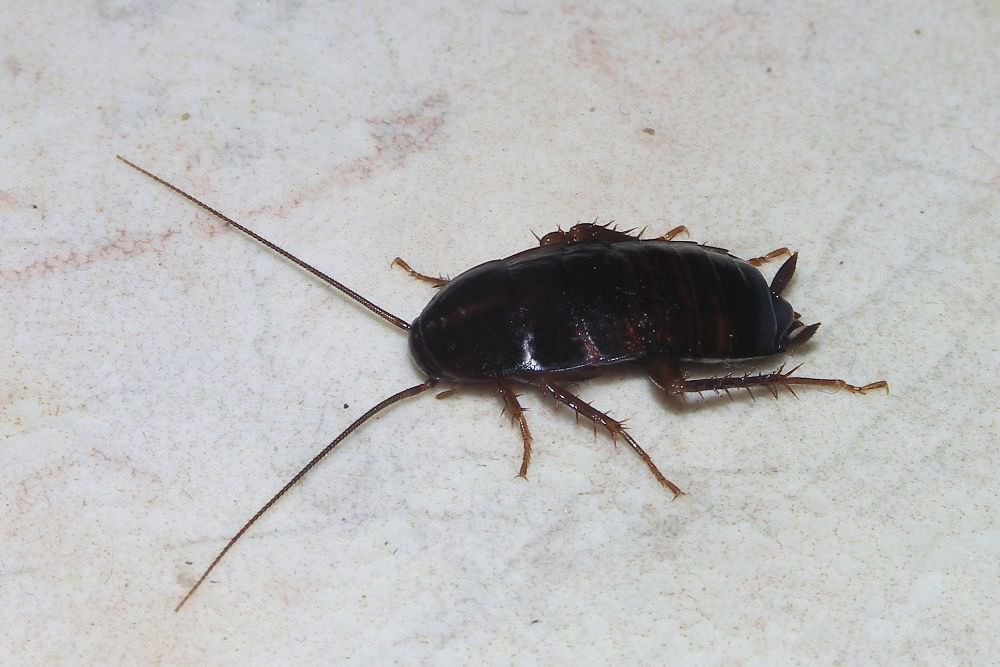
American cockroaches thrive in humid, moist environments. This species infest sewers and storm drains, entering nearby buildings to forage. They do so by traveling through pipes.
Once a cockroach has entered your home, it can attract more. This is accomplished by leaving so-called “scent trails.”
Cockroaches will invade a home for one of several reasons. They are either seeking food, water, or shelter. Once a roach has found one or more of these resources, it will deposit a chemical trail.
These trails consist of pheromones that the cockroach produces naturally. Other cockroaches—usually of the same species—can identify these pheromone trails. To a wandering roach, a scent trail is a lead to potential resources.
Cockroaches are far more likely to follow an existing scent trail than make a new one. The more scent trails leading to your home, the more roaches will enter it.
Aside from pheromone trails, cockroaches can also leave fecal trails. Cockroaches are just as likely to follow a fecal trail, as a scent trail.
Signs You May Have a Cockroach Infestation
Knowing the signs of a cockroach infestation is essential. Cockroaches can reproduce rapidly. The common German cockroach can produce over one thousand offspring in a year, and can live for many weeks. The sooner you identify an infestation, the faster you can get rid of it.
The most obvious sign is frequently seeing cockroaches. If there is a large roach population, you will probably see some of them out and about.
The cockroaches you see are only a small part of the infestation. If you are already spotting many roaches, the infestation may be severe. As these insects are nocturnal, you are most likely to encounter them at night.
Dead cockroaches can also indicate an infestation. This is particularly true if you find roach corpses frequently.
There are other indicators of a cockroach infestation you should be aware of. A big cockroach population always leaves clues behind.
Molts
Baby cockroaches resemble smaller adult roaches. They do not hatch as larvae, like other insects. Instead, they grow and develop over time until they reach adulthood.
The babies, known as nymphs, do this by molting repeatedly. As they reach the next instar (or stage) of development, they will molt. Once the nymph has outgrown the exoskeleton at one phase, it will shed it.
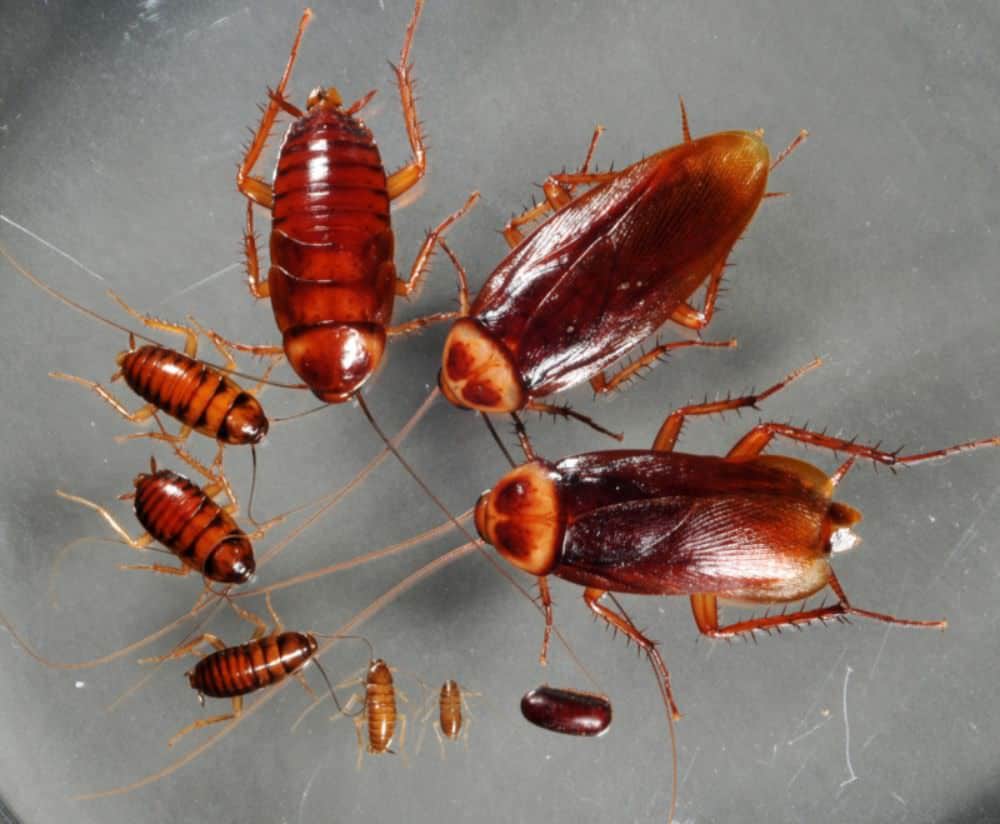
A nymph will pass through several instars as it matures. These discarded exoskeletons remain where the immature roach has shed it. In an infestation, you might see these molts throughout your home.
Feces
Cockroaches leave feces as trails for other roaches to follow. An abundance of cockroaches will result in many fecal trails.
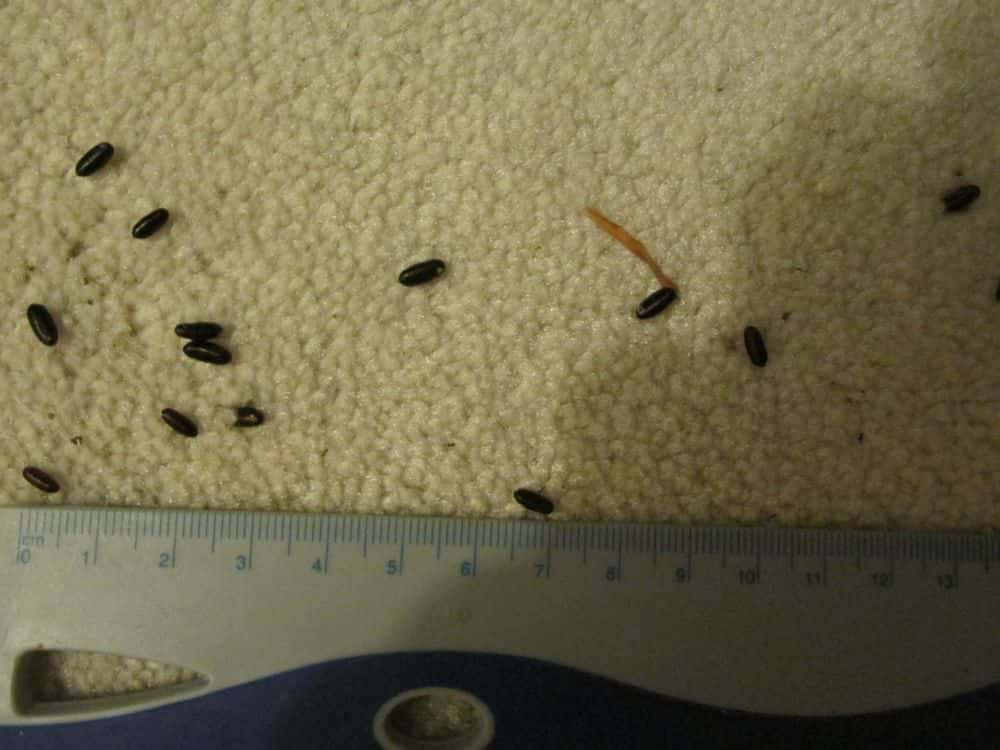
The feces of cockroaches resemble coffee grounds. They can be found in areas where cockroaches scavenge, such as your kitchen.
Oothecae
Female cockroaches do not lay their eggs independently. Rather, all the eggs are contained in a sac known as an ootheca.
Oothecae are deposited in hidden areas throughout your home. Some females will carry them until hours before they are due to hatch. Other species will drop their ootheca much earlier.
If you see these leathery sacs around your home, they are a sure sign of an infestation. Oothecae can also help you identify the species of cockroach. Oothecae are smaller than a penny.
Oriental and American cockroaches have larger oothecae than other species. They are dark brown in color. Oriental cockroach oothecae are the larger of the two, measuring approximately 0.4 of an inch in length.
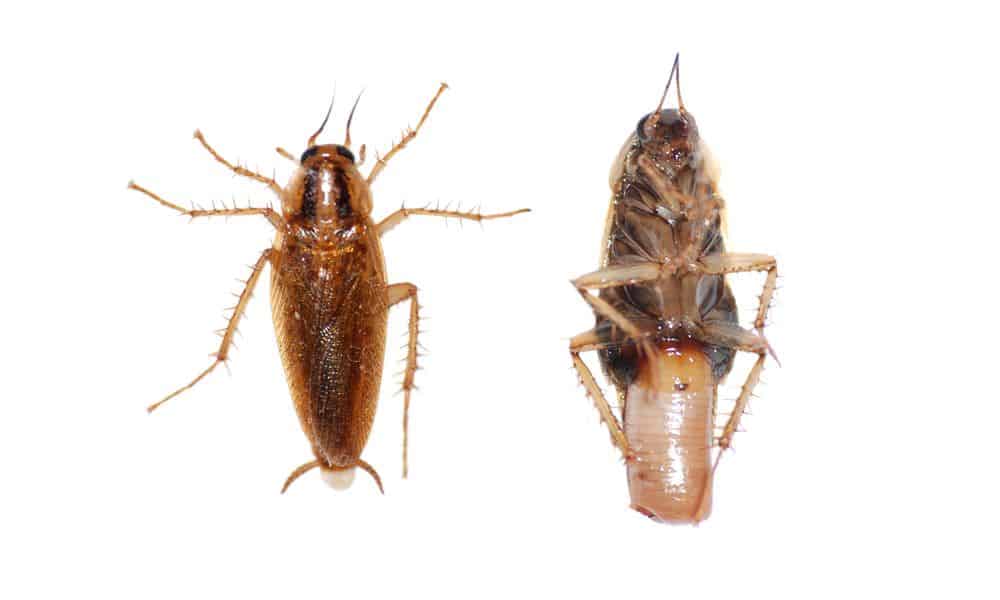
Brown-banded cockroach oothecae are stouter in shape and dark brown. German cockroach oothecae are small but distinctive. These egg sacs are long, shiny and golden brown.
Odor
Cockroaches in massive numbers can produce an unpleasant, distinctive odor. This is due to their natural secretions, such as scent trails and feces.
The more cockroaches there are, the more pungent the smell will be. The stink of cockroaches is musty. If you are able to smell cockroaches, the infestation is extreme.
How to Get Rid of a Cockroach Infestation
Cockroach infestations require a multi-strategy approach. Insecticides alone will not eliminate the roaches.
There are several traits that make cockroaches difficult to get rid of. Firstly, they reproduce rapidly. Secondly, they are highly adaptable—they can survive off very little food. Finally, roaches are excellent at hiding.
Knowing more about the habits of these pests can help you get rid of them. It is important to identify the species of cockroach you have in your home. This can give you an idea of the population size and likely hiding spots.
For example, American cockroaches prefer areas that are moist and heated. They can be found in damp locations, such as bathrooms, crawl spaces, or basements.
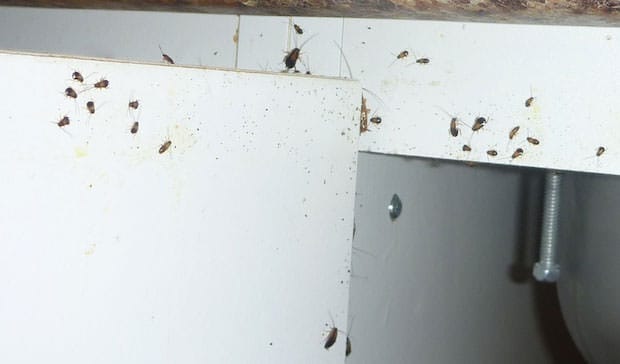
German cockroaches are attracted to the warmth of electrical appliances. These roaches gather underneath fridges or behind microwaves.
It is difficult to starve a cockroach. Similarly, finding all the places cockroaches hide can be hard. Despite this, you can eliminate as many of these resources as possible.
Remove Food & Water Sources
Accessible food and water sources must be removed. For a cockroach, a greasy wrapper or a few drops of water is more than enough.
Roaches can also gather in clean homes. Infestations may develop in an apartment if elsewhere in the building has a cockroach problem. In houses, cockroach populations can build up discreetly. This is especially common if you have untended cracks or crevices.
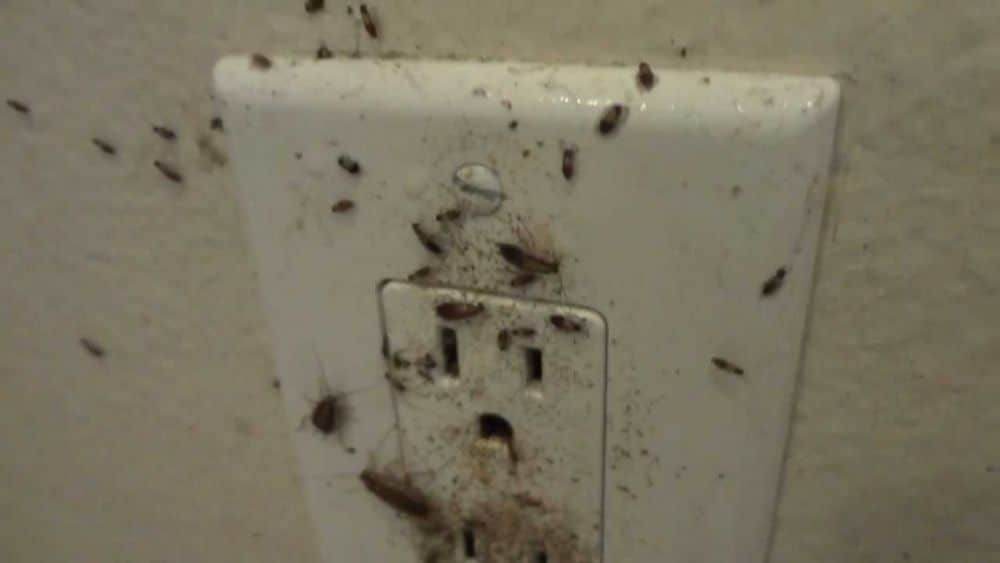
If your home is on the untidy side, it is a hospitable environment for roaches. If this is the case, tackle obvious issues. Organic waste such as leftover food should not be left out.
Garbage cans have to be sealed tightly, and the garbage disposed of frequently. Food that’s in open packaging should be stored in airtight containers.
Leaky pipes and faucets have to be repaired. You want to limit the roaches’ access to water.
Vacuuming regularly is necessary while you are fighting an infestation. You will get rid of cockroach feces, molts and egg cases that can provoke allergies. Additionally, this gets rid of crumbs.
Eliminate Cockroach Hiding Spots
There are a few ways to find where cockroaches are hiding. You could observe the roaches at night, as they are nocturnal. You may see where they are emerging from.
If this option sounds unappealing, there are other things to look for. Feces, molts, and cockroach corpses are the clearest indicators. These unpleasant reminders tend to accumulate near hiding spots.
You can also set cockroach traps (so-called “roach motels”). These gadgets employ an alluring bait to attract roaches. Once they approach and enter, they end up stuck on an adhesive or otherwise trapped.
Note the locations of the traps which are killing the most roaches, for example, in the kitchen. This will help with insecticide placement later.
Hollow bases of cabinets and appliances should be sealed. You will have to treat them with a long-lasting insecticide first, such as boric acid. Floor and wall cracks should also be sealed. You can do this yourself with caulk, or call a professional to help.
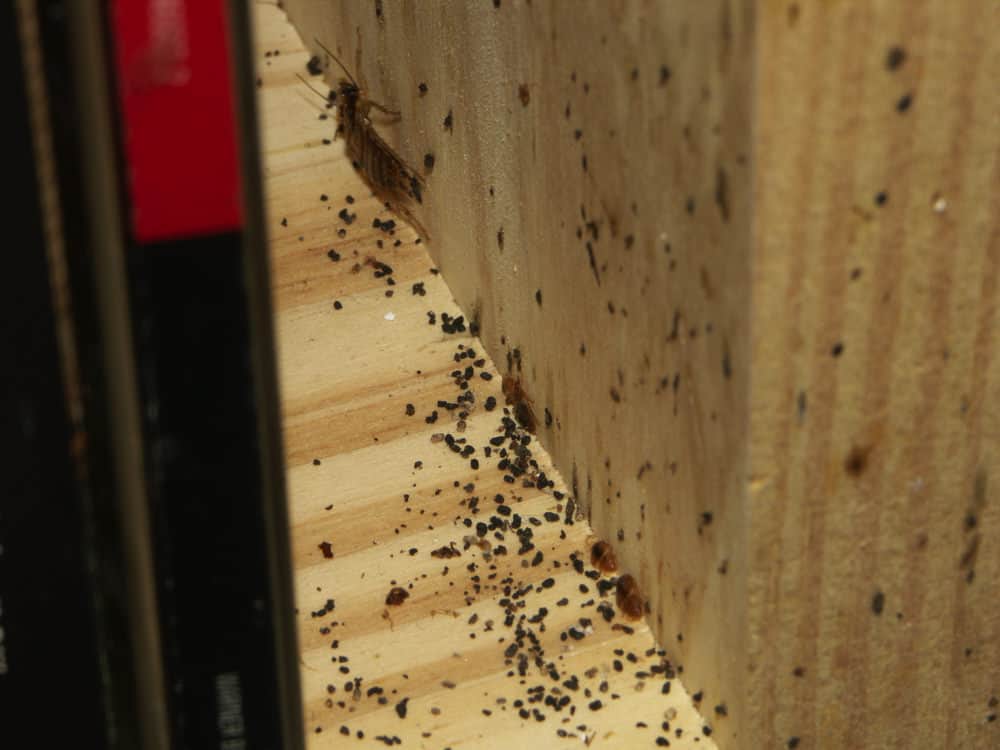
Cockroaches do not like to move out in the open. Even piles of clothing can protect and harbor cockroach nymphs and adults. Throw away or store unnecessary items—for example, boxes of old toys—that are ideal hiding places.
Insecticides
Baits are a popular choice for killing cockroaches. They can come in the form of pastes, granules, or dust. Insecticide is mixed with an enticing food. The majority of baits will kill their victims after 24 to 72 hours.
Keep in mind that baits do not attract cockroaches over other food sources. If there are other sources of food around, such as a trash can, the roaches will prefer that over baits. This is why sanitation is needed before insecticides are used.
You can set the baits near the roach hiding places you have identified. Pastes and gels can be directly applied into crevices that cannot be repaired or sealed. Powders and dust can be sprinkled into corners.
Powders and dust tend to be long-lasting. These types of insecticide are usually made with boric acid. This is a less toxic, but still effective pesticide against roaches.
Insect growth regulators (IGRs) are another option. These insecticides hinder immature cockroaches from developing normally. The adult roach will be sterile and potentially deformed.
You can use baits, boric acid dust, and IGRs simultaneously. Ensure that the products you are using do not contradict each other. It is unwise to mix different insecticides together.
Always consider your family members when using insecticides. Do not set baits or other insecticides out where pets and children can access them. If your infestation is severe, do not hesitate to call a pest control professional.
How to Prevent a Roach Infestation in the Future
Keeping your home clean can reduce the risk of a cockroach infestation. Avoid leaving doors and windows open, so that cockroaches will find it difficult to enter.
Check your home or apartment periodically for maintenance issues. Open drains, cracked walls or poorly sealed doors are all viable cockroach entrances.
You can set out baits or apply insecticides in high-risk areas, even after the cockroach infestation is over. This will ensure that any returning roaches die before they can reproduce or attract more.

